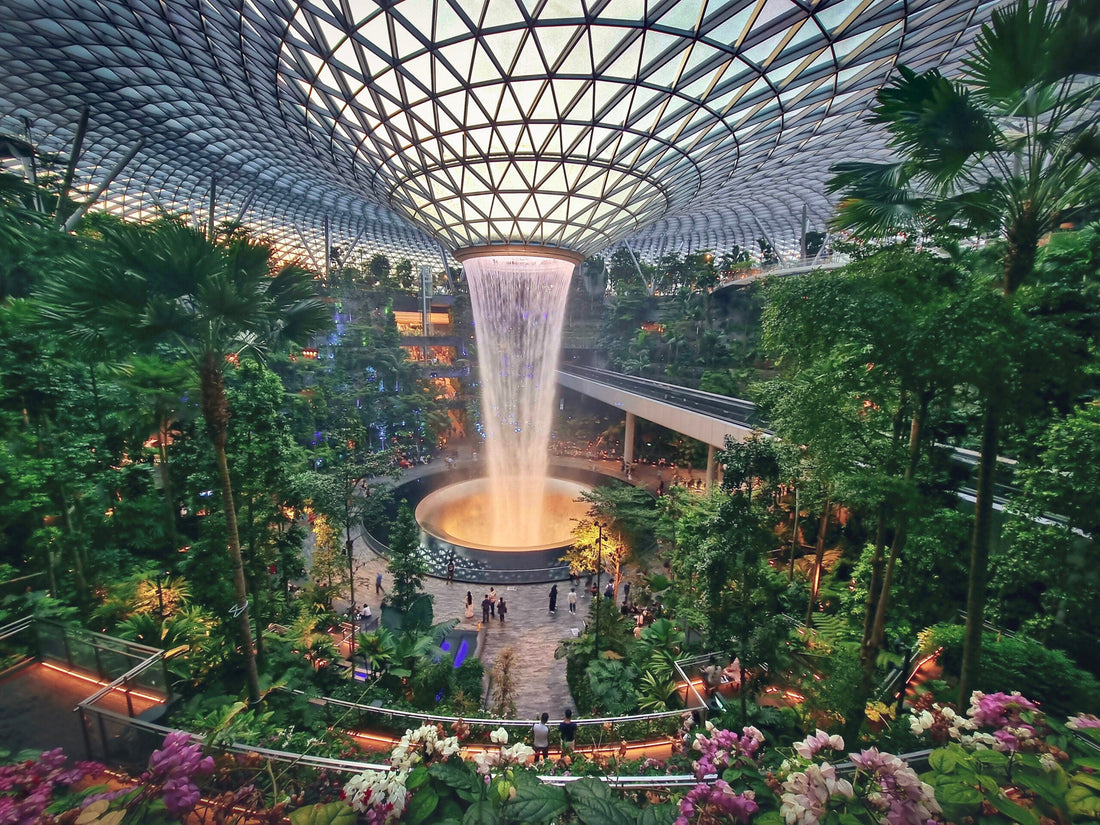
Reviving Ancient Techniques in Modern Times: A Journey Through Time and Innovation - Singapore’s Jewel Changi Airport
In an era where technological advancements dominate our daily lives, it’s refreshing and inspiring to look back at the wisdom of our ancestors. Ancient techniques, often developed through necessity and keen observation, offer valuable lessons for modern innovation. Our series "Reviving Ancient Techniques in Modern Times: A Journey Through Time and Innovation" delves into these age-old practices and how they’re being resurrected and adapted in the 21st century.
One shining example of blending ancient concepts with modern technology is Singapore’s Jewel Changi Airport. This architectural marvel not only serves as a transportation hub but also as an eco-friendly destination in itself. The centerpiece of the airport is its indoor rainforest and the Rain Vortex, the world’s tallest indoor waterfall. The concept harks back to ancient practices of integrating nature within living spaces, reminiscent of historical tea gardens and the famous agricultural terraces of the Maya civilization. These stacked gardens, designed thousands of years ago to optimize water flow from one level to another, are ingeniously mirrored in Jewel's design, allowing the waterfall to nourish the lush greenery inside the dome. This modern-day oasis demonstrates that ancient wisdom, when combined with contemporary engineering and sustainable practices, can create stunning, functional spaces that reconnect us with nature.

The vision behind Jewel Changi Airport was ambitious: to create a space that not only served logistical purposes but also made a positive environmental impact and positioned Singapore as a significant player in the global economy. A contest with a hefty prize of $1.1 billion spurred innovative designs that seemed impossible to achieve. Skeptics doubted the feasibility of incorporating so much greenery within a glass structure, particularly with the challenges of water management and air filtration. However, with the aid of advanced technology, particularly artificial intelligence, the design and mathematics of the dome were meticulously developed. AI played a crucial role in calculating the intricate logistics of water circulation, allowing tens of thousands of gallons to be invisibly pumped around the frame, maintaining the lush gardens and the dramatic waterfall.
This revolutionary approach faced numerous hurdles, much like the pioneering civilizations of the past. The Inca, for example, built sprawling cities with sophisticated water systems and thriving agricultural practices in challenging environments. Today, we draw parallels from these ancient feats, proving that with innovation, perseverance and a touch of maverick spirit, we can overcome the "impossible." Just as the Inca turned sinkholes into bustling cities, modern architects and engineers at Jewel Changi Airport have turned a vision of ecological harmony into a breathtaking reality, inspiring travelers and showing the world what’s possible.
By embracing the wisdom of ancient techniques and marrying them with modern technology, we can create sustainable and beautiful spaces that honor our past while paving the way for a greener future. The story of Jewel Changi Airport is a testament to the endless possibilities that arise when we look back to move forward. It’s a reminder that innovation isn’t just about creating something new but also about rediscovering and revitalizing the timeless wisdom of our ancestors.
As we continue this series, we'll explore more ways in which ancient practices are being brought to life in the modern world, shaping a future that respects and integrates the lessons of the past. Stay tuned for more inspiring stories of innovation and tradition.
